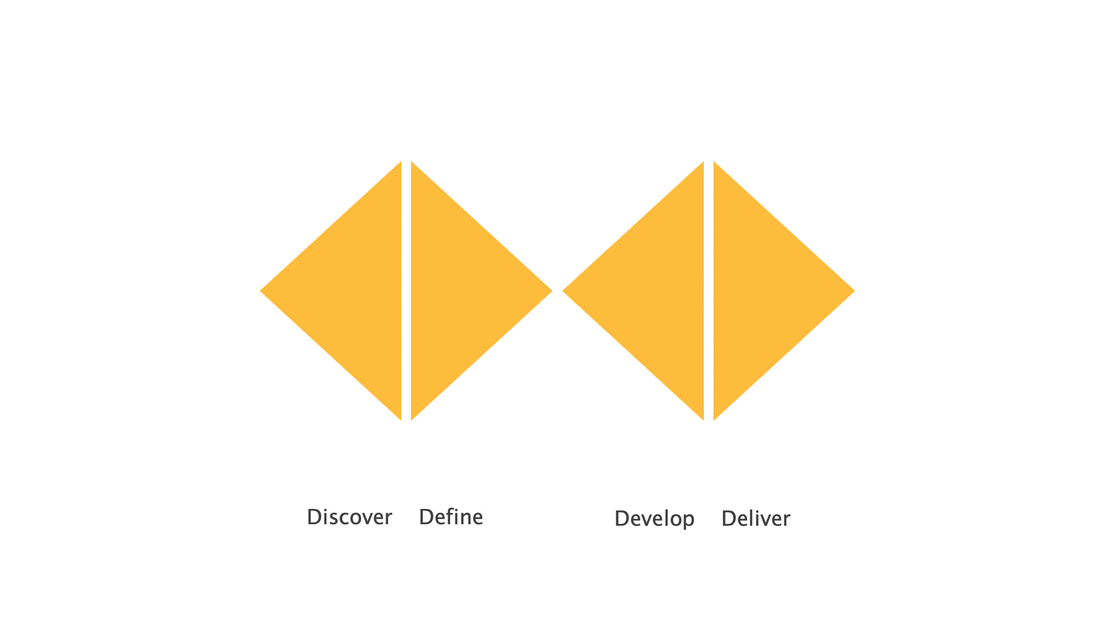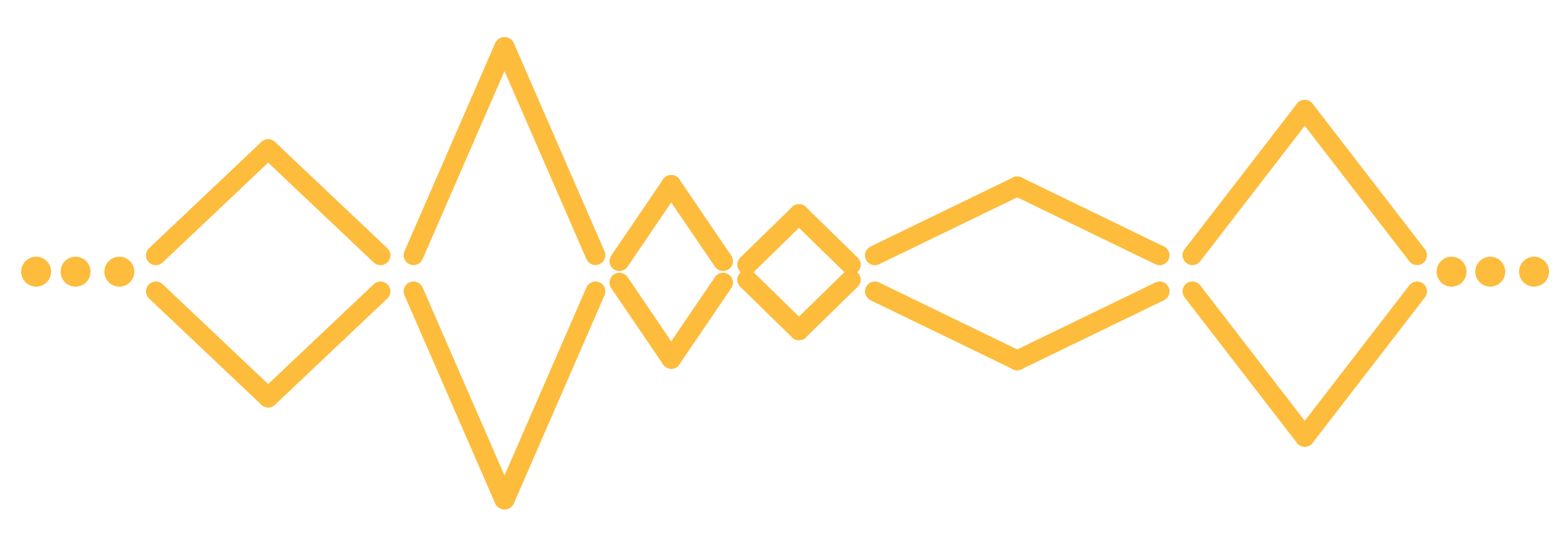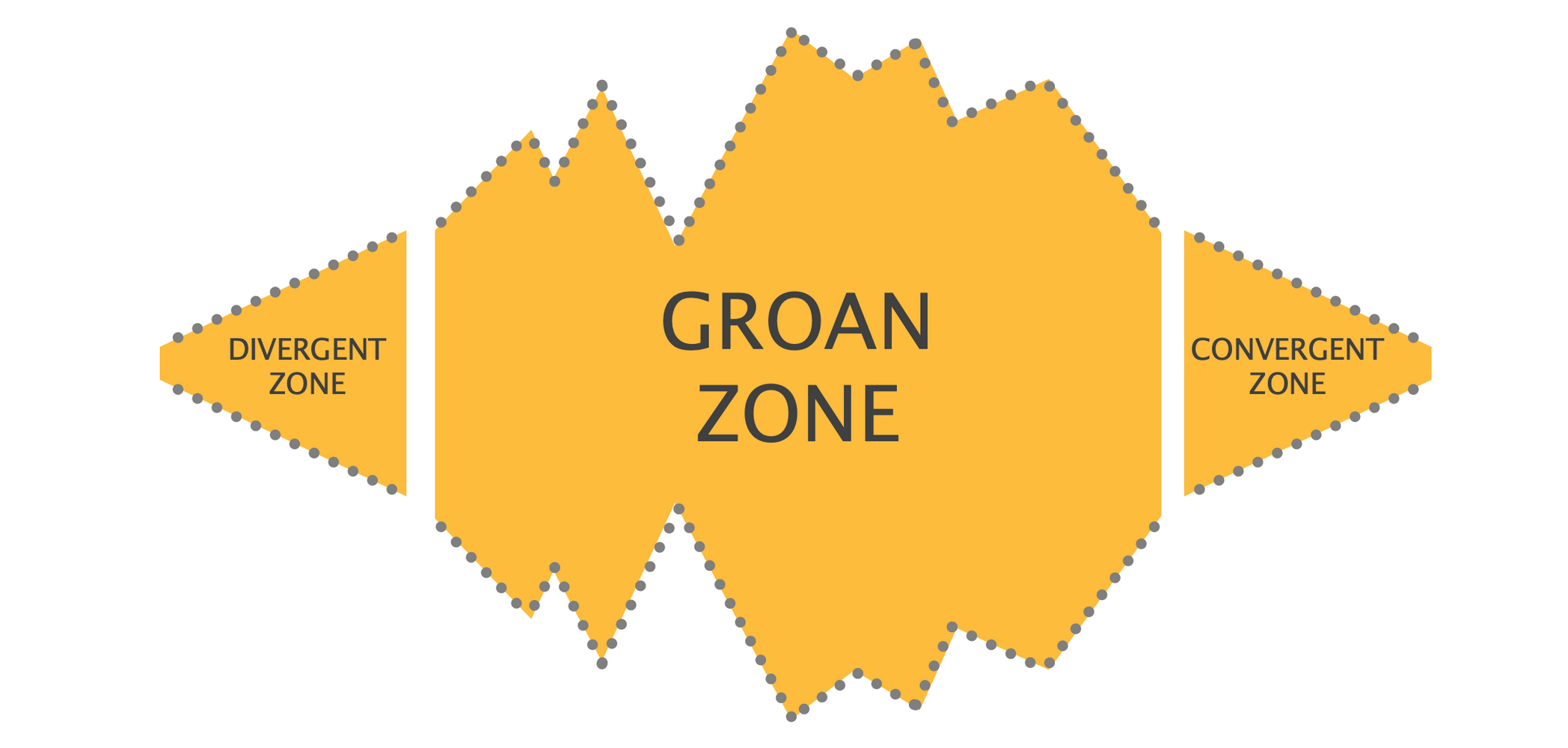February 2020 > Originally posted on Medium
It’s NOT about a “Double” Diamond
Double Diamond
At a recent UX New Zealand event, Erick Mohr placed employment numbers on Design Thinking’s “Double Diamond” as a nice way to show how the problem space exploration still gets very little attention.
Number of people employed by double diamond quarter, from Erick Mohr
Erick’s graphic seems to have gone viral a bit, probably because it supports the case that there is often not enough focus on insight gathering and making sense of these insights.
Employment numbers are imho not necessarily the best metric, BUT entrepreneurs do indeed often simply take their assumptions as facts and even skip collecting and validating insights altogether … you know, the dangerous “innovator bias”.
Diamond Chain
Bringing something from exploring a problem space all the way to a new product on the market is never about one “Double Diamond” (… odds are it’s also a lot more than 3 diamonds too).
It is also NOT a linear process with 4 (Discover, Define, Develop, Deliver), nor 5 (Empathize, Define, Ideate, Prototype, Test) or whatever predetermined number of stages/phases.
Shaping a new value proposition is more like a long journey, with lots and lots of diamonds of different sizes, maybe we can look at it a bit like a “Diamond Chain”?
Diamond Chain, inspired by a graphic from the excellent “This is Service Design Doing” book.
An acceptable answer to the question how long a diamond chain is, would be with the question “how long is a piece of string?” i.e. it depends
Being diamonds, each one of these diamonds has: a start-point, a divergent zone, a convergent zone, and an end-point.
It may be a tad (over)simplistic, but the divergent and convergent zones are respectively, where stuff is being collected/generated/created, and where the stuff is being organized to make sense of it all . The “Groan Zone” (which also appears in “This is Service Design Doing”) highlights that switching from divergent to convergent is — more often than not — extremely challenging.
Check out Facilitator’s Guide to Participatory Decision-Making to learn more about the Groan Zone!
Groan Zone from the Facilitator’s Guide to Participatory Decision-Making
The start-point and end-point of each diamond is where documentation is (should be) consulted and updated.
At the start-point the focus is on what we believe and where we are, i.e. what is our vision, what have we done already, what do we know, what have we tested/learned/validated so far.
At the end-point we record what we just did, what we learned and — based on that — what we decided to do next, i.e. what type of diamond will we do next (remember, it’s not a linear process).
(Poor) Documentation
As if the Groan Zone alone isn’t hard enough to navigate already, whilst coaching and mentoring entrepreneurs/intrapreneurs we observed that many also struggle with the “documentation” part.
The documentation is in many cases important, because between some of these diamonds on the chain, this information is used as input to get (continued) support/funding, in corporate environments usually referred to a stage-gate of some sort.
This documentation can be in any format and it often comes in the form of a Business Model Canvas or some sort of pitch-deck these days. The completeness and value of the documented information is unfortunately pretty poor. The content is also rarely — if ever — updated.
Previously my colleague Bart Hertogh and myself already experimented with alternatives such as the Ash Maurya’s Lean Canvas and we even created our own Product Journey version and later the Business Blueprint.
Although we found that our Business Blueprint did actually improve the value of the content, we also concede that there’s still too much confusion when “approvals” are needed … soooo, we are tinkering on something new and we are in the process of writing up the first part.




